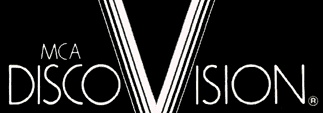
American Film Magazine
March 1979
Disc Fever
Gary Arlen
|
Within the video community, cynics have joked the past few years about the three great American lies; "The check
is in the mail," "Now this won't hurt a bit," and "We'll have a videodisc by Christmas." The third line was a
reference to the repeated assurances from Magnavox and MCA that their latest innovation in home entertainment
would be available "very soon."
The promise finally come true last Christmas - at least for several dozen Atlanta families - when the first
Magnavision videodisc players went on sale (for $695) along with nearly a hundred MCA DiscoVision "video record
albums." Among the first batch of videodisc titles were such recent films as National Lampoon's Animal House, Jaws
and Jaws 2, both Godfather films, plus some vintage Marx Brothers and Abbott and Costello
comedies.
When the Magnavision players went on sale in Atlanta, people stood in line to snap up the first shipment. In
fact, players were in such tight supply that hundreds of customers paid in advance for players which would not be
delivered for several months. Moreover, customers bought up every available videodisc album - just to begin
building a library. There was such a demand for players that some of the first owners were offered up to $3,000
to part with their sets. (Apparently, several offers were made by potential competitors who intended to tear
apart the Magnavision player to see what makes it work.)
The videodisc is a variation on the phonograph record album, but it reproduces pictures as well as sounds.
Indeed, most of the proposed videodisc systems resemble records: They're twelve inches in diameter and are played
on a "turntable." But instead of connecting the turntable to the amplifier and speakers, it is connected to the
antenna terminals on the back of the television set.
Videodisc units cannot record programs off the air, as the various video cassette recorders (VCR) do. Nor can
they record "home movies," which many analysts see as the big new use for home VCRs. But videodisc playback is
superbly clear, and the cost of discs is substantially less than that of videotape. The videodisc unit can be
plugged into a stereo system, and since the disc has excellent high-fidelity quality, the sight and sound
capabilities of any videodisc system are tremendous.
The record industry is salivating over the new videodisc. For example. MCA includes in its DiscoVision promotion
a segment of an Elton John concert produced specifically for videodisc distribution. Channeled through a stereo
amplifier, the concert presentation is more exciting than any record album. Such a video album will probably cost
about $10, but certainly no more than $16, not too much more than the price of current audio-only stereo albums.
And while 1978 was a banner year for movie revenues, record business grosses were even higher, an indication of
how massive a market exists if and when videodiscs are widely exploited for rock concerts and musical
performances.
Nonetheless, the videodisc's initial use will largely be for motion picture programming. The first DiscoVision
catalog is filled with Universal film titles, but there is a handful of entries from Warner Bros., Walt
Disney, and Paramount, plus four films from the prestigious American Film Theatre series of several years ago.
Of the more than two hundred titles in the catalog, nearly 120 are feature films. Movies like Car Wash,
Psycho, Sgt. Pepper's Lonely Hearts Club Band, The Sting, King Kong, American
Graffiti, and The Ten Commandments cost $15.95 each. Older films, including Animal Crackers
some Disney productions (although none of the animated greats), and selected television shows (pilot episodes of
"Battlestar Galactica," "Kojak," and several Jacques Cousteau adventures), sell for $9.95. Special programs
(Julia Child's cooking lessons, pro sports highlights, including several Ali fights, and tennis and swimming
instruction) are priced at $5.95. There are also two ballets, The Nutcracker and Swan Lake, and
one opera The Mikado, at $20 apiece.
MCA, with its Universal Studios subsidiary, was a natural to pioneer in the videodisc business. Drawing from a
library of eleven thousand films, Universal has an almost inexhaustible supply of movies to deliver. While the
other major studios have shown interest in videodiscs, most have indicated that they'll make available some of
their films on a non-exclusive basis to any of the videodisc formats which come along. The general attitude is
that such release to the home market squeezes a little bit more revenue out of the film. Only United Artists has
indicated that it isn't interested in videodisc distribution.
Although the Magnavox-MCA system is not necessarily representative of the future of the videodisc industry, it's
the one system available for close examination today. Magnavox (and its parent company, North American Philips)
teamed up with MCA when each learned that the other was researching a similar format of videodisc technology. It
was a perfect marriage of convenience: MCA had the program resources ("software" in industry lingo), and Magnavox
was a solid equipment ("hardware") company. For the videodisc debut they chose the Atlanta market, with its
cosmopolitan population, high disposable income, and widespread ownership of color television sets. Atlanta is
the first step in a plan to put Magnavision players on sale in all major cities within a little over a year. St.
Louis, Detroit and Minneapolis are believed to be the next markets - possibly as soon as this spring.
|